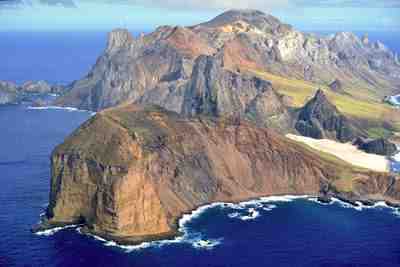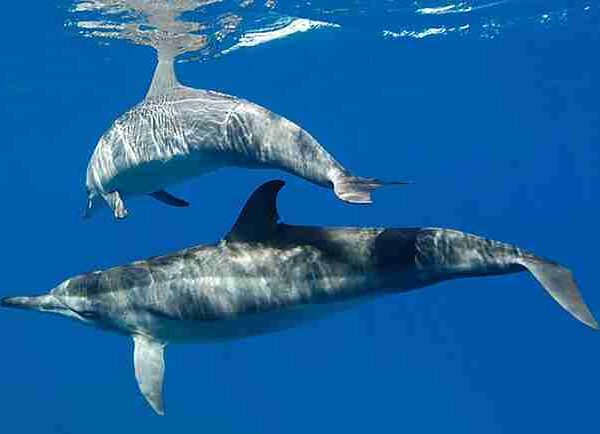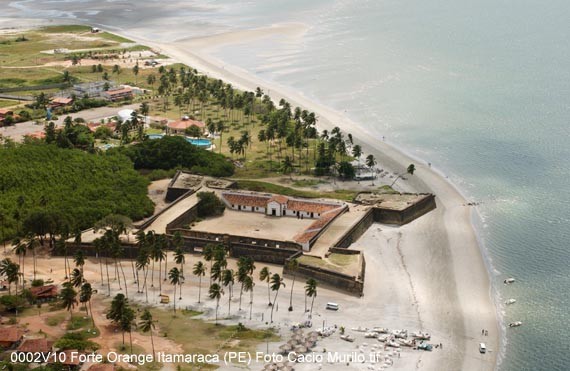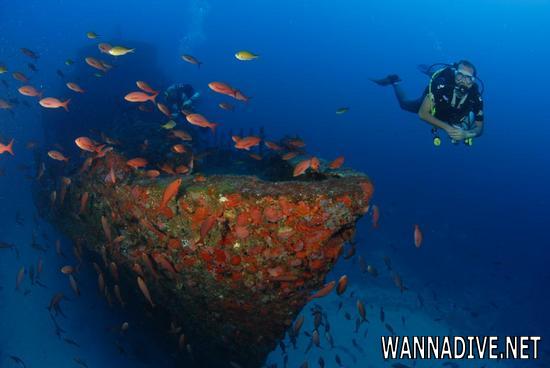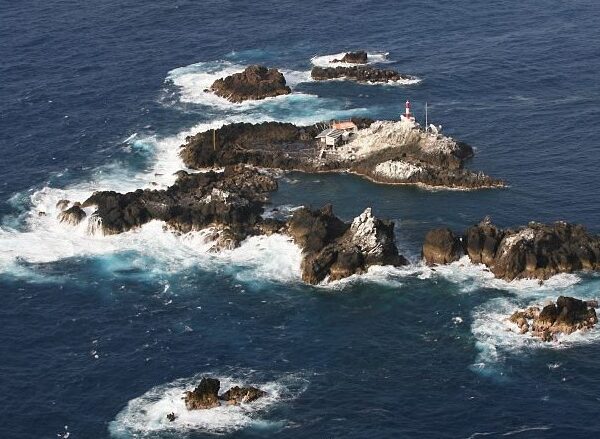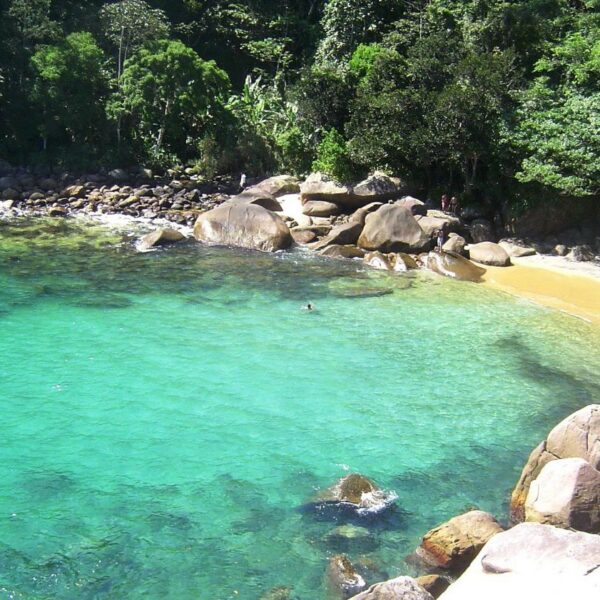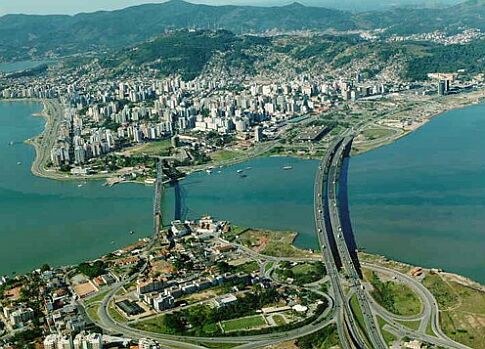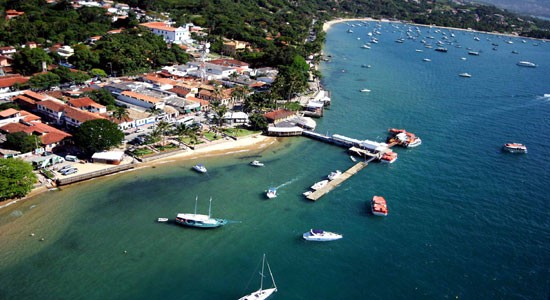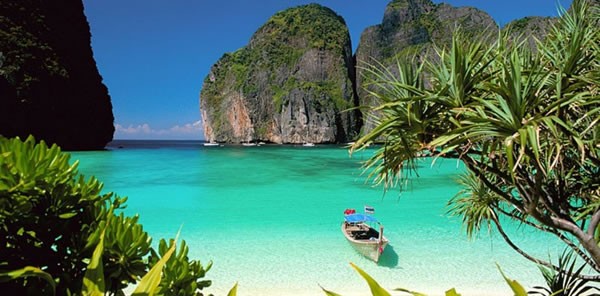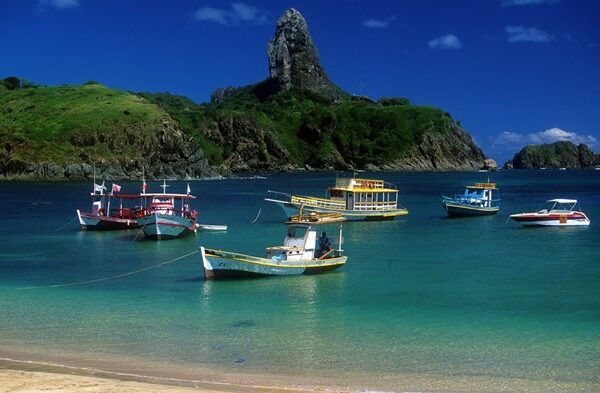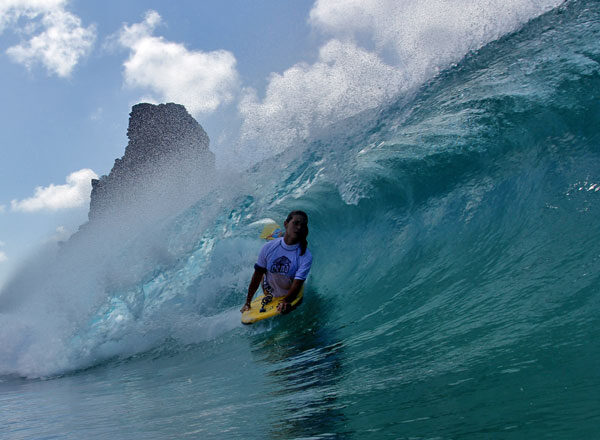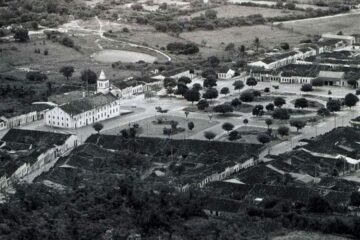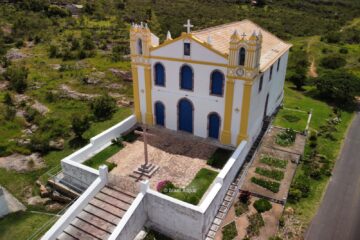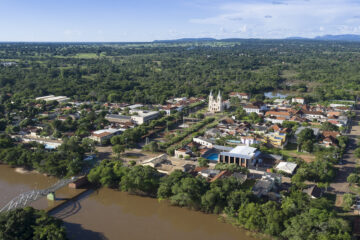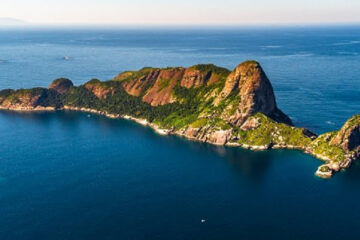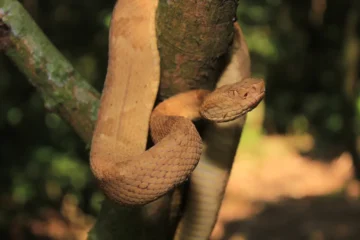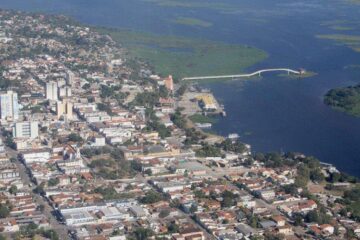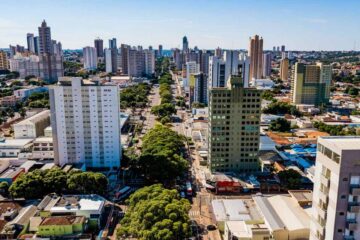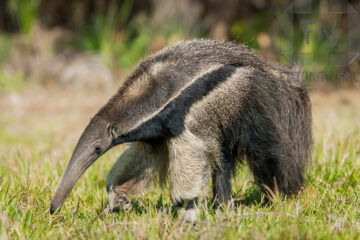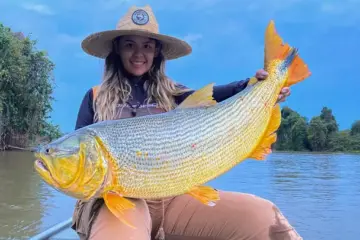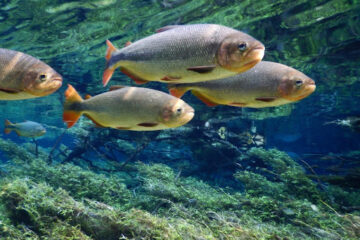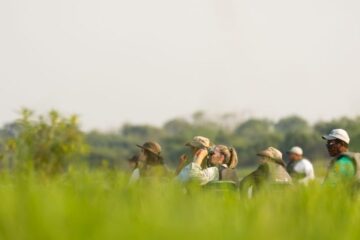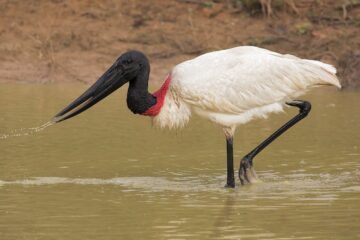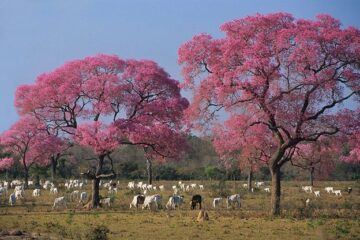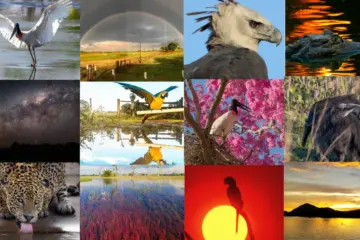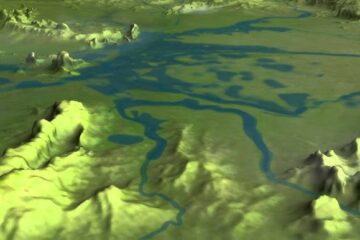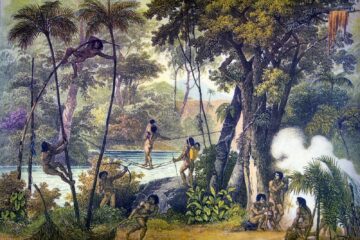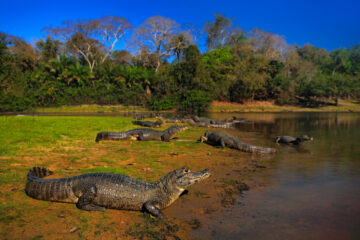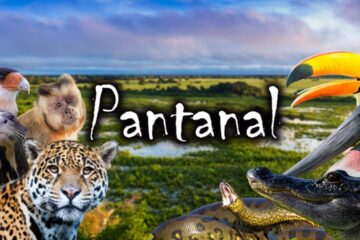The Alcatrazes Archipelago was a former target for cannon fire, Alcatrazes is a living laboratory for evolutionary studies. The Alcatrazes Archipelago is just a few kilometers off the coast of the state of São Paulo, a small group of islands of strategic importance to Brazil that has been the target […]
Islands of Brazil
Brazil’s islands are full of secluded beaches, some of which hold the biggest and most beautiful natural secrets on the Brazilian coast.
With a coastline of more than 8,000 km, Brazil offers several options of islands that tourists can visit.
The continental islands are Ilhabela, Ilha Grande and Ilha de Santa Catarina and the oceanic islands are Fernando de Noronha, Atol das Rocas, Archipelago of São Pedro e São Paulo, Trindade and Martim Vaz.
An island can be considered to be any portion of land surrounded by the ocean and limited by a territorial extension.
Islands are classified into two types
– Continental
Continental islands are generally located close to the mainland, being nothing more than an extension of the mainland territory, having flooded areas that ended up “separating” from the rest of the continent.
In short, a continental island comes from the same base as the mainland, being just a continuation of it.
– Oceanic
Oceanic islands are the exact opposite, when there is no connection with the mainland, when the island has a distinct base and can even be the tip of an underwater mountain.
They are subdivided into volcanic and coral.
The former are formed by volcanic eruptions, where the lava condenses to form a portion of land in the middle of the ocean, thus forming an island. Coral islands are formed by the accumulation of corals.
Another classification of an island
- Marine islands (located in the ocean)
- Fluvial islands (rivers)
- Lacustrine islands (lakes)
- Marine-fluvial islands (in the transition between river and sea, as is the case of Marajó)
Atolls are also found in the ocean. These coral islands have a ring shape, forming small portions of land around a lagoon.
An archipelago is a group of closely related islands.
Brazilian islands
1. Fernando de Noronha
The archipelago can be called Brazil’s “king of the islands”.
Green and transparent waters, protected fauna, breathtaking sunsets and activities for all tastes in the midst of nature are some of the attractions.
2. Tinharé Island
Morro de São Paulo is located on this paradise island in Bahia. Its beaches and lively village atmosphere attract tourists from all over the world.
Access is via a catamaran that departs at various times from Salvador.
But if you want to avoid the boat, you can make most of the journey by land.
3. Ilha Grande
This paradise on the coast of Rio de Janeiro, near Angra dos Reis, has its coastline cut out by coves and peninsulas, which give rise to several beaches with clear waters amidst preserved forest.
4. Abrolhos Archipelago
The Abrolhos Archipelago, in Bahia, is protected and has monitored visits.
It’s a great place for divers and, if you’re lucky, between July and November you may spot humpback whales during your trip.
5. Ilhabela
Ilhabela, in São Sebastião, is super trendy and popular with São Paulo residents, but it has practically deserted beaches with clear waters, waterfalls, islets and mountains.
6. Ilha do Mel
The sweet name already tells you that this nature reserve is perfect for couples or travelers who want peace and quiet.
To get to the island off the coast of Paraná, you can come from Paranaguá or Pontal do Sul, close to the capital of Paraná.
7. Santa Catarina Island
54km long and 18km wide, this is where Florianópolis is located.
The island and other nearby islets offer beaches for all tastes, from the trendiest to the quietest, as well as lagoons and dunes.
8. Caju Island
Although located in Maranhão, it is mainly accessed from Piauí.
It is part of a group of dozens of river islands in the Parnaíba Delta, but stands out for its dunes, natural pools and freshwater beaches.
9. Boipeba Island
Located next to the island of Tinharé, off the coast of Bahia, Boipeba belongs to the municipality of Cairu.
Despite its proximity, it is the opposite of Morro de São Paulo. Quiet fishing villages, coconut groves and empty beaches reign here.
Boat trips take tourists to the natural pools of Moreré.ades such as kayaking and horseback riding.
10. Marajó Island
The largest river island in the world, located in Pará, is famous for its buffalo and natural landscapes.
Tourists will also find a place with a rich culture, especially the cuisine and the famous Marajoara handicrafts.
The main access is via Belém.
Northeast Travel and Tourism Guide
The jararaca-ilhoa lives on Queimada Grande Island
The jararaca-ilhoa lives exclusively on Queimada Grande Island, also known as the island of snakes; The jararaca-ilhoa is a sui generis snake, adapted to arboreal or semi-arboreal life, which is reflected in various aspects of its morphology and behavior. There are more than 30 cataloged species of jararaca snakes. The […]
Trindade and Martim Vaz Islands – History, Shipwrecks, Geography, Flora and Fauna
Trindade e Martim Vaz is a Brazilian archipelago in the Atlantic Ocean, being a Federal Territory aligned to the coast of Espírito Santo, situated in the Atlantic Ocean, and about 1,200 kilometres east of Vitória. It consists of two main islands (Trindade and Martim Vaz), separated by 48 kilometres, which […]
Fernando de Noronha has the highest concentration of dolphins on the planet
Inside the cove of Baía dos Golfinhos in Fernando de Noronha, one of the natural attractions of the archipelago, there is a high concentration of spinner dolphins, an oceanic and tropical species known for its behavior of jumping out of the water and performing up to seven rotations around its […]
Anchieta Island is one of the main tourist attractions of Ubatuba
Anchieta Island is one of the main tourist attractions of Ubatuba, both for its historical importance with the Ruins of the Prison, for the beautiful beaches and trails, for the excellent diving spots and for the Atlantic Forest preserved by the Anchieta Island State Park. Being very close to the […]
Ponta do Boi Lighthouse in Ilhabela
The Ponta do Boi Lighthouse is located on the largest sea island in Brazil – São Sebastião, opposite the city of the same name. So named by Américo Vespúcio in 1502, the now famous Ilhabela, paradise for tourists, was once hell for many who lost their lives in its waters. […]
The Marajó Archipelago
The Marajó Archipelago is located at the mouth of the Amazon River in the state of Pará, bordering the Amazon and the Atlantic Ocean. It is made up of approximately 3,000 islands, with emphasis on Marajó Island, its largest island, with 49,602 m². Marajó Island enchants its visitors for the […]
Itamaracá Island offers beaches with calm waters and natural pools
Itamaracá Island is an island off the coast of the state of Pernambuco in Brazil. It is also a municipality, part of the Metropolitan Region of Recife. It is separated from the mainland by the Santa Cruz channel. Tourism on Itamaracá Island About forty kilometers from Recife, the island offers […]
Wreck of the Corvette Ipiranga in the Fernando de Noronha archipelago
One of the most famous shipwrecks in Brazil, the Corveta V 17 – Ipiranga, of the Brazilian Navy, rests about sixty meters in the waters of Ponta da Sapata in Fernando de Noronha. Very well protected by the island’s diving operators, the Ipiranga corvette has practically all its structures preserved […]
São Pedro and São Paulo Archipelago
The archipelago of São Pedro e São Paulo is a group of small rocky islands located in the central part of the equatorial Atlantic Ocean, 627 kilometers from the archipelago of Fernando de Noronha, 986 kilometers from the nearest point of the continent and 1010 km from Natal, in the […]
Ilha Grande is full of natural beauty and beaches
Ilha Grande is a place full of natural beauty, located in the municipality of Angra dos Reis in the state of Rio de Janeiro. With preserved nature, Ilha Grande is the right destination for those seeking adventure, beaches and nature. Brazil with a coastline of more than 8000 km long […]
The island of Santa Catarina is part of the municipality of Florianópolis
The island of Santa Catarina is part of the municipality of Florianópolis and is located in the Atlantic Ocean, on the southern coast of Brazil, in the center of the coastline of the state of Santa Catarina. It is about 54 km long (north-south) by no more than 18 km […]
Ilhabela is the hottest spot on the north coast of São Paulo State
Ilhabela is the most popular place on the north coast of São Paulo. The Municipality of Ilhabela comprises: São Sebastião Island, Búzios Islands, Vitória Island (inhabited), and more the islets: das Cabras, Serraria (in front of the beach of the same name), Castelhanos, lagoon, Figueira (in Castelhanos bay) and das […]
Beaches in Fernando de Noronha
There are many options of beaches in the archipelago of Fernando de Noronha. Some are more suitable for diving, others for bathing, contemplation, surfing etc. Generally speaking, all the beaches located on the protected side of the main island are ideal for diving and swimming between April and November, due […]
History, Geography and Tourism of the Fernando de Noronha Archipelago
The Fernando de Noronha Archipelago consists of isolated volcanic islands in the South Equatorial Atlantic, its main island being the visible part of a chain of submerged mountains (DORSAL MEDIAN ATLANTIC). Located at geographic coordinates 03 51′ south and 32 25′ west and approximately 345 km from Cape São Roque […]
Fernando de Noronha is one of the best areas in the country for surfing
Fernando de Noronha é uma das melhores áreas do país para a prática do surf, tanto que a ilha é conhecida como o “Hawaii brasileiro”. Em novembro se inicia a temporada das grandes ondas que vai até o mês de março. Os grandes swells do Atlântico Norte que alcançam a […]


